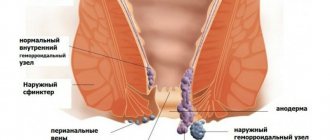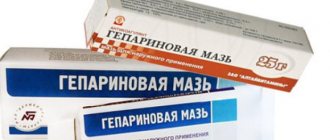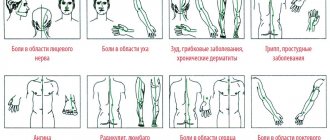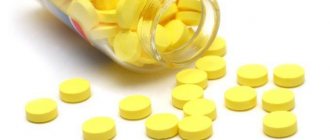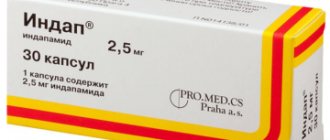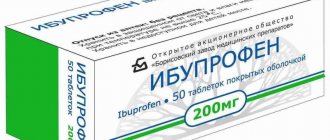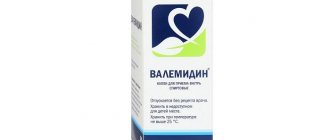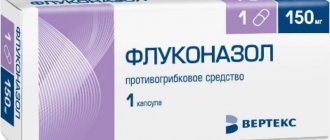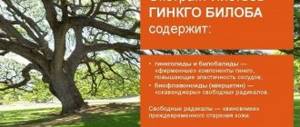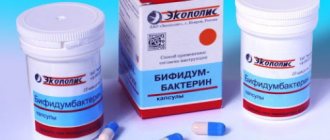Therapeutic effect
The healing effect of Oxolinic ointment is aimed at destroying viruses that cause diseases:
- flu;
- herpes;
- chickenpox;
- ARVI;
- human papillomavirus (HPV).
Oxolin is used for local treatment of the disease, to destroy the viruses that provoked the disease. The active substance in the product blocks and destroys pathogenic particles, so they cannot further multiply and infect healthy cells, as a result of which the disease stops.
The active substance prevents the penetration of infection into cell membranes, thereby blocking the development of the disease and saving the human body from an infectious disease. Therefore, this remedy is also used for the prevention of viral diseases: ARVI, influenza, chickenpox, etc.
The active substance is a synthetic product that was invented and registered in 1970 by our pharmacists. Oxolinic ointment is widely used these days, since when it is used, viral resistance to the active substance is not observed.
It is partially absorbed into the blood and excreted throughout the day by the kidneys. When used externally, 5% of the total amount of the drug is absorbed, and when applied to mucous membranes (nose, eyes) - 20% of the total amount.
Side effects
When using oxoline for treatment or prevention, the following side effects may occur:
- copious discharge of clear mucus from the nose;
- repeated sneezing;
- itching on mucous membranes;
- burning in the eyes, on the skin;
- hyperemia (redness) of the surface at the site of application of the drug.
If the listed effects are short-term in nature and disappear on their own after a few minutes, then there is nothing to worry about - this is how the body reacts to the active substance. If the “side effects” persist for a day or more, you need to stop therapeutic or preventive procedures and consult a doctor to adjust the prescriptions.
Indications for use
As noted above, Oxolinic ointment is produced by manufacturers in two forms (due to the % ratio of active ingredients) - 0.25% and 3%.
3% of the drug is used to cure the following diseases and conditions:
- common and flat warts;
- herpes zoster, scaly, vesicular lichen;
- herpes;
- psoriasis;
- molluscum contagiosum.
Due to the high concentration of the active substance, the drug, upon contact with viruses, neutralizes and destroys them. The use of Oxolinic ointment for the treatment of lichen is a rare occurrence, since stronger remedies for the disease have been developed, but if it is not possible to purchase them, then Oxolinic is indicated for use.
The 0.25% release form is aimed at preventing influenza, and is also used to treat infectious diseases caused by adenovirus. With this treatment, the drug of this release form is applied to sensitive areas of the body: the inner mucous membrane of the nose, eyelid and eyeball.
Scientists have proven the positive effect of using Oxolinic ointment in the fight against influenza viruses, herpes, papilloma, adenoviruses and molluscum contagiosum.
Prevention
The instructions for use of oxolinic ointment say that it is more often used as a disease prevention than for treatment. The remedy is necessary to prevent the following ailments:
- Flu, ARVI.
- Adenoviral infection.
- Shingles.
- Molluscum contagiosum.
- Warts from the papilloma virus.
- Dühring's dermatitis.
Oxolinic ointment is not used to prevent bacterial infections, for example, with sore throat, laryngitis, pharyngitis. Because of this, when visiting patients, you need to use a cotton-gauze bandage. It is advisable to eliminate the risk of infection in other ways.
Although there are instructions for oxolinic ointment, it is still better to consult a doctor before treatment with such a drug. But within reasonable limits, independent use is allowed. As reviews show, the ointment is effective for both prevention and treatment.
Instructions for use
When choosing Oxolinic ointment, remember that for external application choose a 3% drug, and for mucous membranes - 0.25%. You cannot use the 3% form in the area of mucous membranes, as this will negatively affect your health; there is a high concentration of the active substance, which is quickly absorbed into the bloodstream. When applying 0.25% of the product externally, you will not get positive results, since the concentration of the active substance is very low.
Nasal Oxolinic ointment 0.25%
To treat a runny nose, it is recommended to apply the drug to each nostril three times within 24 hours for 4 days. It is necessary to apply a uniform, thin layer of the product so that it does not prevent air from entering naturally.
Experts recommend carrying out this procedure with a cotton swab or a special spatula, and you need to act carefully so as not to cause mechanical damage to the mucous membrane.
Before using a medication, the use of vasoconstrictor drops is not always indicated. I only drip them if heavy nasal discharge causes severe discomfort.
In order to treat ophthalmic diseases, it is recommended to apply Oxolinic ointment with a special spatula behind the eyelid - this should be done three times within 24 hours. If the doctor has prescribed you other medications to treat your eyes, then Oxolinic ointment is applied before going to bed - once. This procedure must be done until the eyes are completely healed. To prevent influenza, the healing agent is applied to the nasal mucosa in a thin, even layer three times a day throughout the day. Just before each application, the nasal passages are treated with a saturated saline solution in order to remove viruses that have entered the nasal cavity.
To make this procedure easier, use cotton swabs, which can be purchased at the pharmacy. The product is applied throughout the entire period of seasonal infection, which is about 30 days.
Oxolinic ointment 3% for external use
Oxolinic ointment is applied in an even, thin layer to the problematic dermis 3 times a day. Next, apply a sterile bandage or napkin and tie it with a bandage.
In order to heal deep skin lesions, first apply a sterile napkin on top of the ointment, then cellophane, then cotton wool and wrap everything tightly with a bandage. This bandage is left for a day, and then the product is reapplied and bandaged, this is done until the dermis is completely healed.
Contraindications and side effects
A contraindication to the use of the drug is the presence of hypersensitivity to oxoline or petroleum jelly in the child. If the medicine is used incorrectly or for too long (more than a month), the child may experience side effects:
- Allergy in the form of burning and mild discomfort in the area where the ointment is applied. These symptoms go away on their own after a short time.
- Allergic dermatitis. In pediatric practice, cases of skin allergies developing as a result of the use of Oxolinic ointment are extremely rarely recorded. The risk of this side effect is no more than 2%.
- Coloration of skin areas in contact with the drug in a blue tint. This color washes off easily and is not a reason to discontinue the medication.
- Excessive mucus production in the nose. Rhinorrhea does not cause severe discomfort and is easily eliminated with the help of any vasoconstrictor drug.
If the baby’s well-being worsens while using oxolinic ointment, treatment should be stopped immediately. If the allergy is aggravated by the occurrence of catarrhal phenomena and extensive skin lesions, it is necessary to show the little patient to a doctor.
Oxolinic ointment for children
Experts recommend using the drug for children over two years of age. This is due to the development of mucous membranes and respiratory organs in children. By the age of two, they are fully formed and easily accept fatty products.
A child under two years of age has narrow nasal passages, which are directly connected to the eyes (tear sac) and middle ear. When using Oxolin at this age, it can easily get into the ear and provoke further development and spread of a viral infection. It can also simply block the narrow passage to the ear and eyes.
For children over two years of age, doctors recommend using only the 0.25% form of the active substance to prevent viral infections and cure the runny nose.
Analogues and prices
Oxonaphthylene and Tetraxoline are structural analogues of oxolinic ointment. The production of these drugs is based on the use of dioxotetrahydroxytetrahydronaphthalene. In addition to this drug, there are many other medications on the pharmaceutical market that have an antiviral effect, but differ in composition, release form, method of administration and cost. The table provides general information about the most effective analogues of oxolinic ointment.
| Drug name | Release form | Active substance | Age restrictions | Contraindications |
| Viferon | Rectal suppositories, gel and ointment for external use | Interferon | None | Hypersensitivity to the components of the drug |
| Nikavir | Pills | Phosphasil | ||
| Arbidol | Tablets, capsules, powder for suspension | Umifenovir | From 3 years | |
| Ergoferon | Lozenges | Antibodies affinity purified to human interferon gamma, histamine, CD4 | From 6 months |
The ointment belongs to the category of available medicines. Depending on the dosage, the average price of the drug is 7.79 – 109 rubles.
New and popular:
- Treatment of stuttering in children: 16 ways to help your child
What is stuttering? Stuttering is a violation of the communicative function of speech, accompanied by a violation of tempo, rhythm and fluency,… - Pregnancy calendar Knowing how pregnancy progresses week by week is not only interesting, but also very useful! IN…
- Children's medications for cystitis The disease cystitis is widespread among children. This is especially true for young representatives of the fair half of humanity -...
- How to give propolis to children for immunity: advice for parents? Children's immunity is particularly delicate, and it is not surprising that children, especially those…
Oxolinic ointment to prevent infection
Leave the house or three times during the day if there are sick people indoors. Moreover, before each application, be sure to rinse the child’s nose with warm water to remove the viral infection that has already entered the nose. To treat a runny nose in a child, Oxolinic ointment is placed in each nostril three times within 24 hours for 4 days. It is necessary to apply a uniform, thin layer so that it does not prevent air from entering naturally.
Doctors recommend carrying out this procedure with a cotton swab or a special spatula, and you need to act carefully so as not to cause mechanical damage to the mucous membrane.
Oxolinic ointment during breastfeeding: pros and cons, how to use
Despite the fact that doctors recommend the use of the drug during pregnancy, Oxolinic ointment is conditionally contraindicated during breastfeeding. This means that its use is advisable if the risk of infection and severe course of a viral disease is much higher than the risk of the main active substance entering breast milk and, accordingly, the baby’s body.
On the other hand, if there is an epidemic of colds or flu, or there will be mandatory contact with a sick person, then it is reasonable to apply a small amount of Oxolinic ointment to the mucous membrane of the nasal passages, rather than carry out full-fledged therapy later. It is in the latter case that lactation makes it impossible to use most antiviral and antibacterial drugs.
Oxolinka: its indications and preventive use
Oxolinic ointment is recommended for the prevention and treatment of conditions caused by the following pathogens:
- The virus that causes influenza (Influenza virus).
- Herpes simplex virus.
- Adenoviruses (Adenoviridae).
- Chickenpox virus (also known as chickenpox) and herpes zoster (Human alphaherpesvirus 3).
- Molluscum contagiosum (Molluscum contagiosum).
- Human papillomavirus (Human papillomavirus).
The following diseases are treated with the help of three percent ointment: condylomas (aka genital warts), whose appearance is provoked by the Human papillomavirus, herpes simplex, types of lichen, including herpes zoster, vesicular and scaly, psoriasis (in complex therapy), molluscum contagiosum and Dühring's dermatitis herpetiformis .
In modern medical practice, Oksolinka is rarely prescribed in the treatment of lichen, since there are faster-acting remedies. However, if it is impossible to use them, a dermatologist may recommend Oxolinic ointment. Oxolinic ointment 0.25% is prescribed for: rhinitis, viral keratitis, conjunctivitis and other viral eye diseases. This ointment will not treat flu that has already started, but may prevent its occurrence.
For preventive purposes, the ointment is used within a month from the beginning of the influenza epidemic. The active component of the ointment blocks the binding of virus particles to the cell membrane, preventing the virus from entering cells. This gives an excellent preventive effect. If you communicate with a person sick with the flu, you need to use Oxolinka three or four times a day. It is advisable to wash your hands more often.
note
The main advantage of Oxolinic ointment over the mass of antiviral drugs is safety.
It has a minimum of contraindications and a small number of side effects. This is explained by the pharmacokinetics of Oksolinka, that is, how quickly it is absorbed, distributed in the body and subsequently excreted. When applied to the skin, absorption into the systemic circulation is only 5%, and when applied to mucous membranes, this figure increases to 20%. Whereas when taking tablets or syrups, up to 90% of the medicine enters the blood.
Of course, in this case there will be more undesirable effects and restrictions on treatment than when using Oxolinic ointment.
Oxolinka does not accumulate in the body, is completely eliminated from it after 24 hours, does not have a toxic effect on the kidneys and liver, and does not irritate the stomach. The only discomfort that patients using the ointment complained about was a slight burning sensation that lasted a few minutes.
This should be taken into account when applying ointment to the child’s nose, and distract him with a toy or conversation. As for the evidence base on the effectiveness of Oxolinic ointment, no randomized clinical studies have been conducted. Moreover, it is studies such as these that make it possible to judge whether a medicine is useful or not.
However, it should be taken into account that Oksolinka is currently sold exclusively in the territory of the former Soviet Union, which means that Western pharmaceutical companies are not interested in conducting any research with its “participation”. In addition, during its existence (which is over 40 years), Oxolinic ointment has positively proven itself in therapeutic and pediatric practice.
If the remedy had been ineffective, it would have been stopped being prescribed and used long ago, but this did not happen. Apparently, Oksolinka does not need research, because it has already been successfully tested many times on young, mature and elderly patients during the USSR and after its collapse. There are no known interactions of the ointment with other local or external agents.
Use of oxoline during pregnancy
Expectant mothers are often interested in the question: can oxolinic ointment be used during pregnancy? After all, it’s scary to trust different sources of information on the Internet or on the screen when you read both positive and negative reviews about the same drug. It is also difficult to refer to how the ointment is described. For the same and many other reasons, today we decided to briefly study its instructions for use, which are known to many of us, and find out exactly whether pregnant women can use oxolin.
Oxolinic ointment is, firstly, a preventive, and secondly, an excellent antiviral agent that copes well with any viral diseases. Therefore, both therapists and obstetricians-gynecologists unanimously advise their patients and men to use the drug.
Doctors frankly say that this ointment cannot cause any harm to a pregnant woman. Most likely, on the contrary, oxolinic ointment during pregnancy will have an excellent antiviral effect not only on a woman who is about to give birth or has just become pregnant, but also on the unborn baby.
Doctors recommend that every pregnant woman treat the nasal mucosa in the morning with ointment in the autumn and winter. Naturally, you can’t just limit yourself from viruses like this; it’s better to leave the house unnecessarily in extreme cold and during epidemics not to leave the house. 3When near someone with the flu, it is better for the expectant mother to wear a bandage. In addition, throughout the winter, autumn and spring, you should take vitamin complexes and supplement with medications that strengthen your immune system. Before a pregnant woman decides to buy the drug, she should carefully study the instructions for this ointment so that she does not get an expired one.
Overdose
Burning in the nose - symptoms of an overdose of Oxolinic ointment
Symptoms of an overdose with Oxolinic ointment:
- burning sensation on the skin or nasal mucosa;
- copious nasal discharge (rhinorrhea).
Therapeutic measures for an overdose of Oxolinic ointment:
- stop using the ointment, rinse off its remnants from the skin or nasal mucosa with warm running water.
- If you accidentally use Oxolinic ointment orally (inside), you should seek medical help, perform gastric lavage with a probe, and take an enterosorbent.
Oxolinic ointment - composition, release forms and commonly used names
Oxolinic ointment is produced only in the dosage form of an ointment. However, at present, depending on the purpose, two types of Oxolinic ointment are distinguished:
1.
Ointment for nasal use 0.25%.
2.
Ointment for external use 3%.
As you can see, both types of Oxolin are ointments, and differ in the concentration of the active substance and the area of the human body on which they can be used.
Nasal ointment is intended to be placed in the nasal passages and conjunctival sac or applied to the eyes. Ointment for external use, accordingly, is used for application to the skin of the body.
Oxolinic ointment is often called simply Oksolin, which is the second officially registered name of the drug. That is, the terms “Oksolin” and “Oxolinic ointment” are two full and equivalent names for the same drug that can be used on an equal basis with each other. In addition, the names “Oxolinic ointment 3” or “Oxolinn 3” are often found, which are a slightly reduced full spelling of “Oxolinic ointment 3%” or “Oxolinic ointment 3%”, where the percentage symbol is not indicated, but only the digital expression of the required concentration is left ointments. Currently, in everyday speech, Oxolinic 0.25% ointment for nasal use is simply called “Oxolinic ointment” or “Oxolinn”, and 3% ointment for external use is called “Oxolinic ointment 3” or “Oxolinic 3”. Today, such names are well-established and understandable to most doctors, pharmacists and patients.
Both 0.25% and 3% Oxolinic ointment contain as an active component the chemical compound dioxotetrahydroxytetrahydronaphthalene, which has another, shorter name - oxolin.
It was the short name of the chemical compound that is the active substance that gave the ointment its name. 0.25% ointment contains 2.5 mg of oxoline per 1 g, and 3%, respectively, 30 mg per 1 g. As an auxiliary component, 0.25% and 3% Oxoline ointment contains medical purified petroleum jelly.
Currently, ointment of both concentrations is produced in aluminum tubes. Moreover, 0.25% ointment is in tubes of 5, 10, 25 and 30 g, and 3% is only 10, 25 and 30 g. The ointment is normally dense, viscous, thick, translucent with a whitish-grayish tint without any inclusions.
The drug Oxolinic ointment is used in dermatology:
- for the treatment of herpes simplex;
- in complex therapy of Herpes zoster (shingles);
- in complex therapy of molluscum contagiosum;
- for the treatment of warts; for viral dermatoses;
- in complex therapy of Dühring's dermatitis herpetiformis;
- in complex therapy of scaly lichen; in complex therapy of genital warts.
The drug Oxolinic ointment is used in ophthalmology:
- in complex therapy of viral eye lesions (viral keratitis, keratoconjunctivitis of adenoviral etiology or others);
The drug Oxolinic ointment is used in otolaryngology:
- for the prevention of influenza (prevention of respiratory infection) during an epidemic; for the treatment of viral rhinitis;


